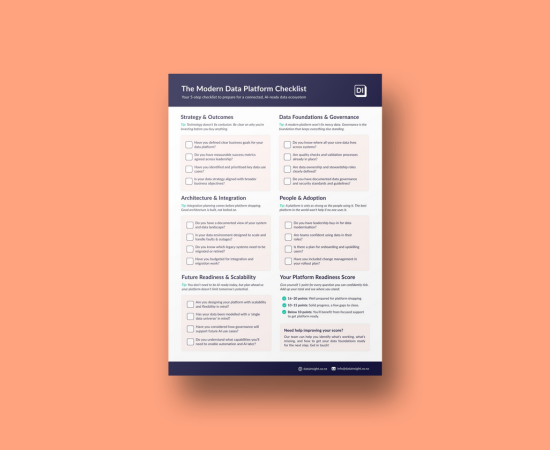A data breach threatens not just businesses, but also the careers and reputation of data leaders, executives, and board members that are not seen to be actively managing their data, privacy, and AI risks.
The stakes are high — if ignored, you could be caught up in the unfolding public relations disaster, with the careers of data leaders and executives on the line, and board members face genuine liability risks.
The volume of high-profile data breaches has been on the increase:
- Uber 2016: Resulted in the conviction of their Chief Information and Security Officer for attempting to conceal the breach
- Optus 2022: Subject to an ongoing investigation by the Australian Federal Police into a massive data breach
- Medibank 2022: Allocated $167 million AUD to address and cover costs associated with their data breach
- Latitude Finance 2023: New Zealand's largest data breach, exposing passports, driver's licenses, and personal information. An ongoing investigation is assessing whether reasonable steps were taken to protect the held personal information.
And these are just a few, so what should you be doing about this? Below we will outline the driving forces behind the increasing risks and outline our strategic approach to protect your data.
What is driving the increased risk?
There is a perfect storm that is driving the increased risks of a data breach for all organisations in every industry:
- The amount of data being collected is accelerating at a rapid pace, organisations are grappling with managing more data, from more sources than ever before.
- Data has emerged from being used by just internal data experts to now being a crucial element in sales, marketing, digital, product, contact centers, HR, and more. This means data is hard to manage and there are more opportunities for misuse.
- Every organisation is having to embrace digital transformation, meaning that there are more entry points for hackers looking to exploit weaknesses.
- Generative AI, like ChatGPT, has increased the security surface area, with the tool being used by teams across organisations, but there are risks of exposing sensitive company information, as Samsung found out in April 2023.
- The privacy and regulatory landscape are constantly changing. With the implementation of the Privacy Act 2020, GDPR, CCPA, and similar regulations, organisations face heightened requirements. Furthermore, the evolving technological landscape suggests the imminent need for more AI regulations to keep pace with emerging technologies.
What can you do to overcome these risks?

To tackle the growing risks of a data breach, make sure to implement the five strategies outlined below:
Strategy 1:
Perform a Data Audit
A data audit provides a view of your data landscape and allows you to answer the following questions:
- What data do we hold?
- How accurate is it?
- How sensitive is the data?
- How is the data collected?
- Where is it stored?
- How is it accessed and used?
This picture gives you a full understanding of your risk exposure and what gaps may need to be addressed.
Strategy 2:
Create Data Governance Frameworks
Now you know where your sensitive data is and any gaps, you need to keep it safe. This is where a data governance framework or a data governance strategy comes into play. It sets out the following:
- Policies and standards around the data – how should the data be used, managed, and documented?
- Defines who’s responsible for what to ensure that the policies and standards are followed
- Establishes processes to follow to make it easy for everyone to know what to do
- Outlines the monitoring of its implementation, is it being followed and making a difference?
Having data governance in place ensures that your sensitive data has the right security measures in place, reducing the potential impact of any data breach.
Strategy 3:
Develop a Robust Privacy policy
A Privacy Policy is your explanation to customers on the data you are collecting, why you are collecting it, and how you plan to use any personal information. It is a key document to protect your organisation during a data breach, avoiding any legal claims.
Strategy 4:
Develop an AI Policy
As artificial intelligence takes the spotlight, it's crucial to chart a clear path for its use within your organisation. An artificial intelligence policy is key in setting the framework for everyone to follow, ensuring that you address the risks and privacy considerations that could leave you exposed.
Yet, the stakes are higher than just the immediate considerations of risk and privacy, the absence of a well-defined AI policy introduces an additional layer of concern. The unregulated deployment of AI systems poses the inherent risk of generating biased outcomes or being susceptible to manipulation. This underscores the importance of a robust policy to keep things in check.
Strategy 5:
Focus on Data and Security Collaboration
To avoid these outcomes, data leaders cannot work in isolation, they need to collaborate with security experts. This approach will allow for a more cohesive strategy to prevent sensitive data from leaving the organisation without permission.
As organisations collect more data, deal with AI, and face stricter privacy rules, the stakes for the careers of data leaders, executives, and board members have never been higher. It's crucial to do everything you can to protect the data you collect, and our five key strategies can help with that.
In addition to these strategies, we have created a comprehensive guide to enhance your understanding and management of data privacy. Our guide provides a straightforward, no-nonsense approach, turning complex regulations into actionable insights and clear strategies, tailored for your business.

By learning to identify critical data, manage risks, and turn compliance into a competitive advantage, you can navigate the data privacy landscape with ease and confidence.
Download the guide now and start fortifying your data privacy and security strategy today!








.png)